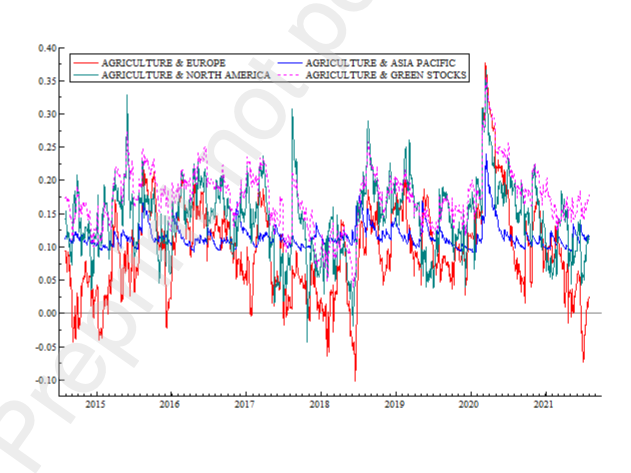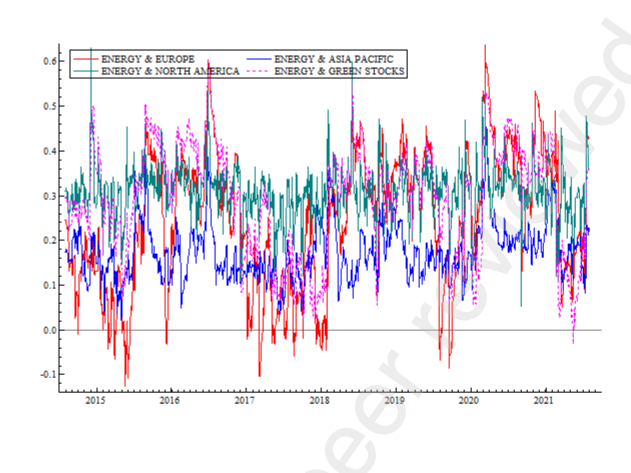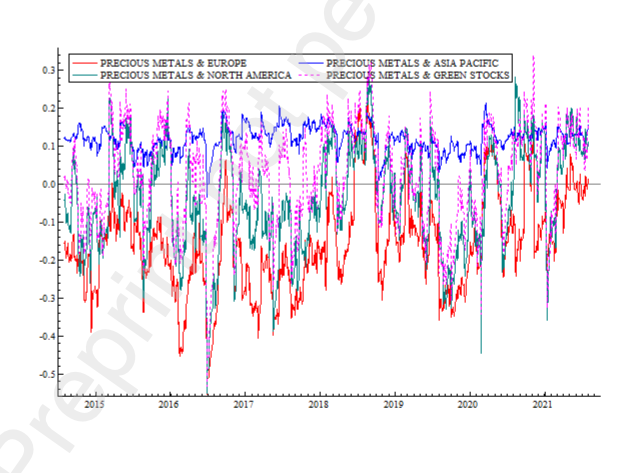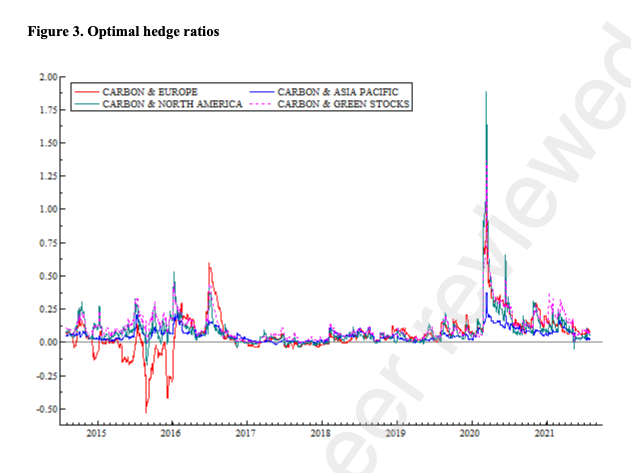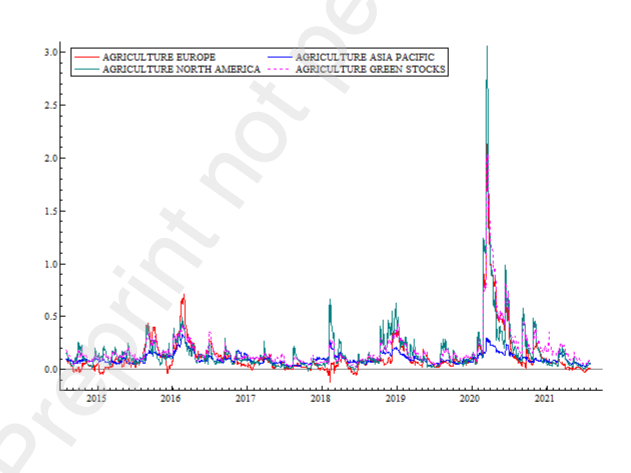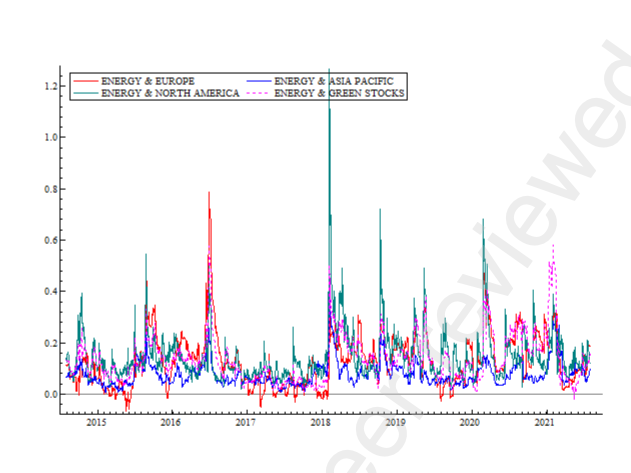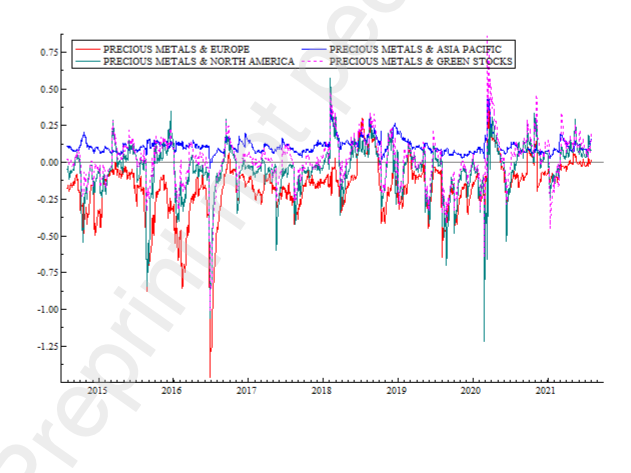Carbon Futures – Emerging Asset with Hedging Benefits
Diversification is one way of minimizing the risk of a portfolio. A well-diversified portfolio contains numerous assets from various sectors, each having a small weight so that a crash of any individual security does not hit the entire portfolio. The authors behind this paper came up with a new idea for diversifying stock portfolios. They examined new emerging asset, carbon futures.
Because global warming is a severe problem, many central authorities have started to allocate a limited number of carbon permits, thus forcing carbon releasing firms to convert to greener practices. Many companies buy carbon allowances to satisfy their legal obligations. On the other hand, there are also companies which sell their carbon allowances. Therefore, the space for trading carbon futures emerged.
The authors calculate time-varying optimal hedge ratios and optimal weights for carbon futures. The primary outcome indicates that including a small amount of carbon futures in a stock portfolio delivers hedging benefits and reduces the overall risk for an expected return level. However, the hedge ratios are time-sensitive and highly dependent on the state of the market.
Additionally, the researchers also analyzed the COVID-19 pandemic period and found that as hedging became more expensive and highly demanded, the benefits of the studied strategy deteriorated. The paper also compares the hedging effectiveness and diversification benefits of carbon futures with other common hedges. The results indicate that carbon futures are a better option than energy futures. However, the precious metals and agriculture futures show better diversification benefits.
Authors: Sercan Demiralay, Gaye Hatice Gencer, Selcuk Bayraci
Title: Carbon Credit Futures as an Emerging Asset Hedging, Diversification and Downside Risks
Link: https://papers.ssrn.com/sol3/papers.cfm?abstract_id=4014292
Abstract:
Even though carbon futures as a new asset have attracted the attention of scholars, there have been few attempts to investigate potential benefits of investing in carbon credits. In this study, we analyse the feasibility of hedging and diversifying stocks with carbon futures. We adopt the dynamic conditional correlation (DCC) models which allows us to compute time-varying optimal hedge ratios, optimal weights and portfolio returns. These hedging and portfolio metrics are then compared with those derived for commodity futures. Our main results suggest that including a small portion of carbon futures in a stock portfolio provides hedging benefits and reduce overall risk for a given level of expected return, even though the hedge ratios are time-varying and significantly dependent on the market state. The COVID-19 outbreak has certainly changed the dynamics; as hedging becomes more expensive and the hedging effectiveness, measured by downside risk and symmetric variance reductions, is weakened, suggesting that the hedging capability of carbon futures is impaired during the pandemic. In terms of diversification benefits, our results show that including carbon in a stock portfolio improves the risk adjusted performance of stocks overall; however, these benefits deteriorate in the wake of the COVID-19. We further examine economic benefits as a measure of hedging performance and find evidence of positive utility gains that are strongly dependent on investors’ risk aversion and diminish after the pandemic. Comparing the performance of carbon futures with commodities, hedging effectiveness of carbon futures is not as high as that of precious metals and agriculture futures, however, carbon credits perform better than energy futures in terms of hedging and diversification.
As always, we present several interesting figures:
Notable quotations from the academic research paper:
“Emissions trading systems are also known as cap and trade (CAP) or emissions trading scheme (ETS) under which the central authority allocates a limited number of carbon permits. According to this system, carbon releasing companies must hold permits to cover their emissions. Thus, through a market-based system, polluters are allowed to adjust their carbon emissions and permits by trading carbon allowances.
By 2020, 57 countries have initiated carbon pricing and via the global carbon markets, which mark up to a 272 billion USD volume (20% higher than the total volume in 2019) and firms buy and sell carbon allowances to meet legal obligations. Hence, carbon emissions which are initially a factor of production, have become tradable commodities subject to stochastic price changes (Gronwald et al., 2011, Wen et al., 2017). The carbon market with its recent history provides new opportunities for market participants, however, its price dynamics should be well understood in order to develop relevant investment decisions and risk management strategies.
This study analyses carbon credit futures as an emerging financial asset. Given the distinctive and unique features of carbon allowances as a tradable asset, we believe that investigating the investment characteristics of carbon futures deserves a special attention and can provide useful information for financial market participants. Our main aim is to assess the hedging and diversification benefits of carbon allowances for stock portfolios (MSCI Asia Pacific, MSCI Europe, MSCI North America, and NASDAQ green stocks).
More specifically, this paper attempts to implement hedging strategies using carbon prices that improve the efficiency of risk management and minimize the overall portfolio risk. Such a contribution is eminent for market players in terms of building accurate portfolio construction strategies and pricing related financial derivatives. In our case, hedging can be considered as a special case of asset allocation that involves carbon/commodity futures and equities.
Our results show that the carbon asset is a relatively cheap hedge overall, however, optimal hedge ratios have considerable volatility over time and significantly depend on the market state. During the COVID-19 pandemic, hedging becomes more expensive and hedging effectiveness falls, showing that hedging capability of carbon futures is impaired.
Our results have potential implications and significant insights for investors and portfolio managers. Even though, carbon credits provide hedging and diversification benefits; these benefits seem to significantly change over time. Our results provide evidence of higher hedging costs and lower hedging effectiveness during the pandemic; therefore, financial market participants should be aware of changing hedging dynamics and closely monitor the markets to dynamically adjust their portfolio settings. The findings further suggest that carbon as a relatively new asset does not perform as good as precious metals and agriculture futures since its hedging effectiveness is comparatively lower, hence, it provides weaker protection against equity market risk. However, energy futures are the weakest hedging instrument, so investors would be better off if they avoid combining their stock investments with energy commodities.
This suggests that carbon can be seen as a new alternative investment when hedging against the stock market risks. In other words, investors who have an exposure to equity market risk can effectively and inexpensively hedge their positions by carbon futures. Moreover, financial market participants should use the modified estimators of downside risk measures that capture skewness and kurtosis of the loss distribution as they provide the largest hedging effectiveness.”
Are you looking for more strategies to read about? Sign up for our newsletter or visit our Blog or Screener.
Do you want to learn more about Quantpedia Premium service? Check how Quantpedia works, our mission and Premium pricing offer.
Do you want to learn more about Quantpedia Pro service? Check its description, watch videos, review reporting capabilities and visit our pricing offer.
Are you looking for historical data or backtesting platforms? Check our list of Algo Trading Discounts.
Or follow us on:
Facebook Group, Facebook Page, Twitter, Linkedin, Medium or Youtube
Share onLinkedInTwitterFacebookRefer to a friend



